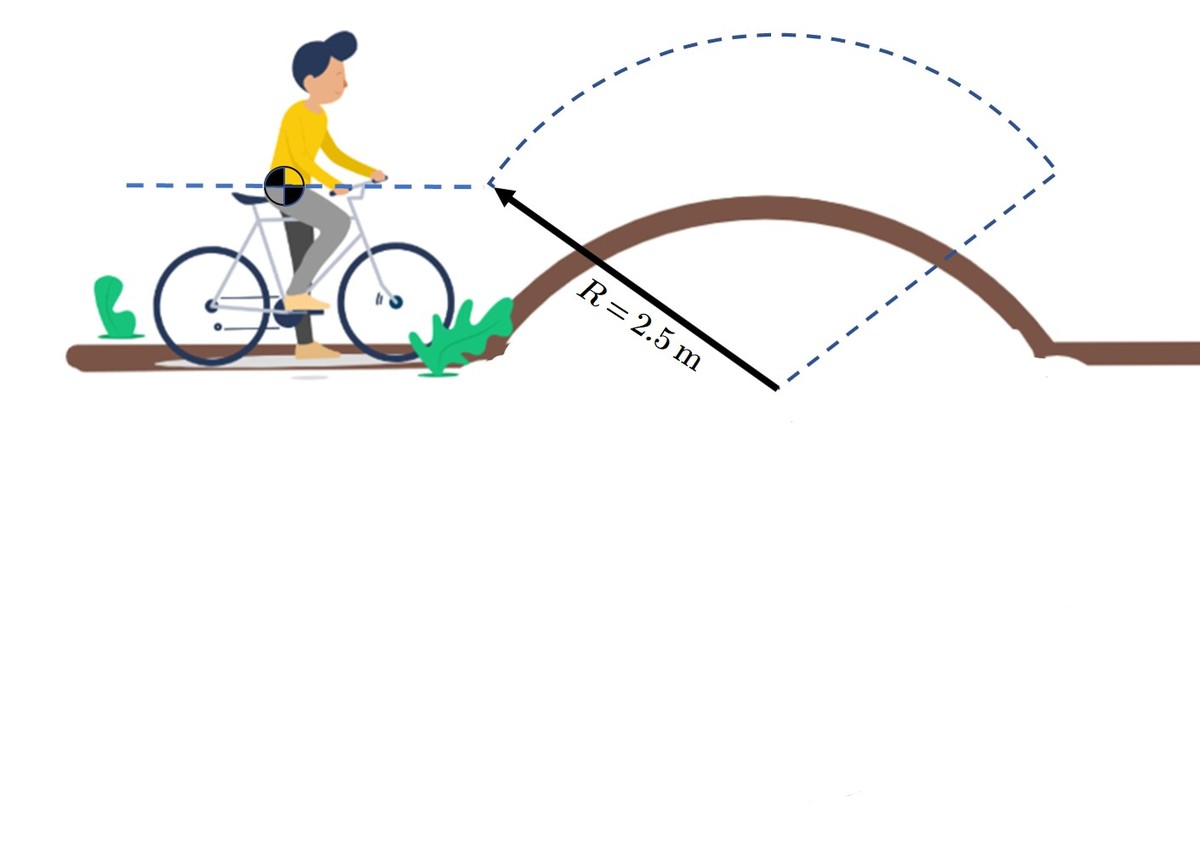Airborne Biker

Assuming that the biker has a mass of and is , how slow can he travel whilst still becoming airborne after he hits the bump?
The answer is 5.
This section requires Javascript.
You are seeing this because something didn't load right. We suggest you, (a) try
refreshing the page, (b) enabling javascript if it is disabled on your browser and,
finally, (c)
loading the
non-javascript version of this page
. We're sorry about the hassle.

In order for the bike to become airborne, the normal force will have to equal 0.
a c = m ∑ F r v 2 = m m g − F n r v 2 = m m g − 0 2 . 5 v 2 = 1 0 0 1 0 0 0 2 . 5 v 2 = 1 0
v = ( 2 . 5 ) ( 1 0 ) v = 5 m/s